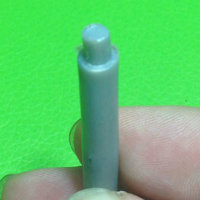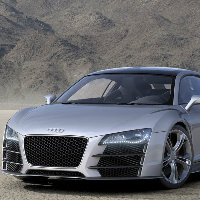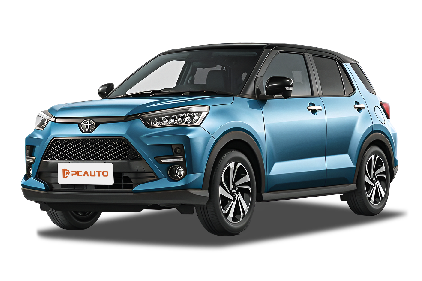Q
How many seats does Toyota Raize have?
The Toyota Raize is a compact SUV offering 5-seater configuration in the Malaysian market, ideal for small families or daily commuting. Despite its compact dimensions, clever interior packaging ensures decent passenger comfort. Under the hood, you'll find either a 1.0-liter turbocharged or 1.2-liter naturally aspirated engine, striking a good balance between fuel efficiency and peppy performance. It also comes equipped with Toyota Safety Sense active safety suite, meeting modern consumers' demands for safety features.
For Malaysian drivers, the Raize's nimble size makes it a breeze to navigate city streets and tight lanes, while its elevated ride height can handle light off-road trails when needed. Among its competitors, the Raize stands out for Toyota's legendary reliability and affordable maintenance costs. If you need more seating, the 7-seater Toyota Rush is worth considering, but the Raize holds the edge in terms of pricing and fuel economy – making it a top pick for budget-conscious buyers who don't want to compromise on brand reputation.
Special Disclaimer: This content is published by users and does not represent the views or position of PCauto.
Related Q&A
Q
Are all Toyota Raize turbocharged?
Not all Toyota Raize models are turbocharged. The Toyota Raize comes in different powertrain versions. Among them, the 1.0L Turbo CVT model is equipped with a turbocharged engine. The intake type is Turbo, and the engine has a maximum horsepower of 98PS. However, there are also 1.2L models, including the 1.2L E CVT, 1.2L E MT, and 1.2L G CVT. These models have a displacement of 1198mL and are powered by naturally aspirated engines with a maximum horsepower of 88PS.
A turbocharged engine can provide greater power output with the same displacement, enhancing the vehicle's acceleration performance. On the other hand, a naturally aspirated engine features a simple structure, good stability, and low cost. It has a linear power output and can also meet the needs in daily driving.
Q
Is Toyota Raize keyless?
Yes, some models of the Toyota Raize in the Malaysian market are equipped with the Keyless Entry system. It specifically depends on the selected configuration level. Higher - spec versions usually come with this convenient feature, allowing car owners to unlock the doors or start the engine via the buttons on the door handles without taking out the keys. This compact SUV is also fitted with the Push Start function. When used in conjunction with the Keyless system, it can significantly enhance the daily convenience of using the vehicle.
For Malaysian consumers, such configurations are particularly useful in hot weather or when their hands are full. At the same time, the Raize maintains the Toyota models' consistent durability and low - fuel - consumption characteristics. Its 1.0L turbocharged engine is suitable for local road conditions. It should be noted that there may be configuration differences among different model years. It is recommended to confirm the latest specifications with authorized dealers before purchasing a car.
Similar technologies are also offered by competing models in the same class, such as the Honda HR - V and the Daihatsu Rocky. However, Toyota has an edge in terms of local after - sales network coverage and vehicle resale value. If your budget allows, choosing the version with the keyless system can provide a more modern driving experience, especially for urban users who often need to commute for short distances.
Q
Is the Toyota Raize a luxury car?
The Toyota Raize isn't a luxury car. It's positioned as a compact SUV, targeting the economical, practical, and youth - oriented market. It's suitable for Malaysian consumers with limited budgets but a preference for fashionable designs. The Raize is equipped with a 1.0 - liter turbocharged or a 1.2 - liter naturally aspirated engine, emphasizing fuel economy and urban driving flexibility. In terms of configuration, it offers basic technologies like a touch screen and a rear - view camera, but lacks high - end features commonly found in luxury cars, such as leather seats, premium audio systems, or intelligent driving assistance.
In the Malaysian market, its price range is similar to that of the Perodua Ativa, making it an affordable model. Luxury cars usually refer to high - end products from brands like Lexus and Mercedes, which come with more powerful engines, exquisite interiors, and brand premiums. If you want to know about its competitors in the same class, you can refer to the Honda HR - V or the Mazda CX - 3. They offer a more near - luxury experience in some configurations, but their prices are relatively higher. Consumers who choose the Raize value cost - effectiveness and Toyota's reputation for durability more than luxury features.
Q
Does Toyota Raize Equip with Lane Assist?
Yes, the Toyota Raize is equipped with the Lane Assist system on some high-end models. This feature is usually included in the Toyota Safety Sense (TSS) active safety package. It monitors the lane lines through a camera and provides steering wheel correction or warnings when the vehicle drifts out of the lane, helping the driver keep the vehicle centered in the lane. It should be noted that the specific configuration may vary depending on the year and model version. It is recommended that Malaysian consumers confirm with local dealers before purchasing or refer to the official specification sheet.
Lane Assist is part of the ADAS (Advanced Driver - Assistance Systems). This kind of technology has gradually become popular in the Malaysian market in recent years. In addition to Toyota, other brands such as Honda and Mazda also offer similar functions, but the implementation methods may vary slightly. For example, some systems only provide warnings, while others actively intervene in steering. For owners who often drive long-distance, this kind of feature can effectively reduce fatigue, but it should be noted that it is not fully autonomous driving, and the driver still needs to maintain control of the vehicle.
Q
What is the safety rating of the Toyota Raize?
The safety rating of the Toyota Raize performs well in the Southeast Asian market. Its base - model vehicle received a 4 - star rating (out of 5) in the ASEAN NCAP test, mainly thanks to the standard basic safety features such as dual airbags, ABS anti - lock braking system, and vehicle stability control system. If the high - end version adds side airbags and other configurations, it is expected to be upgraded to a 5 - star rating.
For Malaysian consumers, the Raize's active safety features, such as the Pre - Collision System (PCS) and Lane Departure Warning (LDW), are at the mainstream level in the B - SUV segment. However, it should be noted that the test results are based on the ASEAN NCAP standard, which differs from the test items of the European Euro NCAP or the Japanese JNCAP.
Malaysian car owners can consider the differences in safety - configuration versions according to their own needs when making a purchase. For example, users who often drive long - distance are recommended to choose models equipped with adaptive cruise control. At the same time, it is advisable to visit authorized dealers to experience the demonstration of the vehicle's safety functions to have a more comprehensive understanding of the vehicle's protection performance.
Q
Is Toyota Raize a Hybrid Model?
Currently, all versions of the Toyota Raize available in the Malaysian market are pure fuel-powered models, and no Hybrid version has been launched. This vehicle is equipped with a 1.0L turbocharged engine or a 1.2L naturally aspirated engine, targeting the economical and practical small SUV market. For Malaysian consumers who are interested in hybrid technology, Toyota also offers other popular hybrid models in the local market, such as the Corolla Cross Hybrid or the Yaris Cross Hybrid. These models adopt Toyota's mature THS II hybrid system, which can significantly improve fuel efficiency and reduce emissions. In recent years, the Malaysian government has been encouraging the popularization of hybrid and electric vehicles through policies like tax exemptions. Therefore, if a hybrid version of the Raize is launched in the future, it may attract more local users who care about environmental protection and fuel consumption. It should be noted that although hybrid technology can save fuel, the purchase cost is usually higher than that of the fuel-powered version. It is recommended that consumers make a choice based on their actual budget and vehicle-using needs. Meanwhile, they can also pay attention to the actual test reports of hybrid technology by Malaysian automotive media to get more comprehensive reference information.
Q
What is the difference between Toyota Ativa and Raize?
The Toyota Ativa and Raize are essentially the same model with different names in different markets. The Ativa is the exclusive name for Toyota in the Malaysian market, while the Raize is the common name in the international market. Both are built on the DNGA platform and share core technologies and designs. In the Malaysian market, the Ativa has undergone some adaptation adjustments to meet local needs. For example, the suspension is tuned to better suit tropical road conditions, and it may offer configuration options that match the preferences of Malaysian consumers, such as ventilated seats or extra storage space.
In terms of power, both are equipped with a 1.0 - liter turbocharged three - cylinder engine paired with a CVT transmission. However, the ECU tuning of the Ativa may take into account the fuel quality and climate conditions in Malaysia. In terms of appearance, the Ativa continues the compact SUV design of the Raize, but there may be slight differences in the front grille or wheel styles to enhance local recognition.
It's worth noting that this "twin - model" strategy is quite common in the automotive industry, aiming to improve market acceptance through localization optimization. For example, the Proton X50 and Geely Binyue also have a similar relationship. For Malaysian consumers, choosing the Ativa means enjoying comprehensive after - sales support from Toyota's national dealer network. On the other hand, parallel - imported Raizes may face differences in warranty and parts supply. It is recommended to carefully compare the configuration lists and after - sales service terms before purchasing a car.
Q
Will Toyota Raize be Introduced in Malaysia?
Currently, it hasn't been officially confirmed whether Toyota Raize will be introduced into the Malaysian market. However, considering its popularity in other Southeast Asian countries and Toyota's product layout in Malaysia, there's a possibility of its introduction in the future. As a compact SUV targeting the young market, Raize has performed well in markets like Indonesia and Thailand, thanks to its stylish appearance, fuel efficiency, and Toyota's reputation for reliability. If it enters the Malaysian market, it may compete with models such as Honda HR-V and Proton X50. The demand for compact SUVs among Malaysian consumers has been continuously increasing. Coupled with the advantage of local assembly by Toyota UMW, Raize will be more price - competitive if it's locally produced. It should be noted that the Malaysian market has a greater preference for hybrid vehicles. If Raize can offer a hybrid version, it will better align with the local trend. It is recommended to follow the official website of Toyota Malaysia or local auto show information, as new vehicle introductions are usually officially announced through these channels. For consumers with a limited budget who still want Toyota's quality, they can first look into the currently available Toyota Rush or second - hand C - HR models as transitional options.
Q
Is Toyota Raize automatic?
Yes, the Toyota Raize available in the Malaysian market comes with an automatic transmission. Specifically, it is equipped with a D-CVT continuously variable transmission. This type of transmission combines the smoothness of a traditional CVT with the driving feel of simulated gear shifts. It is suitable for city commuting and boasts excellent fuel economy. As a compact SUV under the Toyota brand, the Raize is targeted at the younger demographic. The combination of its 1.0-liter turbocharged engine and automatic transmission strikes a good balance between power and fuel consumption, making it a great fit for the stop-and-go traffic conditions in Malaysia.
It's worth noting that automatic transmissions are quite popular in the Malaysian market because they are easy to operate and well - suited for congested roads. Moreover, the Raize's D - CVT also offers a sport mode, which can enhance the acceleration response. When considering models in the same class, the Honda HR - V and Nissan Kicks are also common choices with automatic transmissions. However, the Toyota Raize has a certain edge in terms of cost - effectiveness, thanks to its more affordable price and warranty policy.
It is recommended that you take a test drive at an authorized dealer before purchasing a car to see if the transmission tuning meets your personal driving habits.
Q
How many litres does the Toyota Raize's fuel tank hold?
The fuel tank capacity of the Toyota Raize is 36 liters. This small SUV has gained popularity in the Malaysian market for its economic practicality and stylish design. Its fuel tank design takes into account the needs of daily commuting and short-distance trips. Paired with a 1.0-liter turbocharged or a 1.2-liter naturally aspirated engine, it can offer a combined fuel consumption of about 15 to 18 kilometers per liter, and the full-tank range can reach around 500 to 600 kilometers.
For Malaysian users, it's necessary to pay attention to the choice of fuel. It is recommended to use RON95 gasoline to balance economy and engine performance. At the same time, regularly checking the tightness of the fuel tank cap can prevent evaporation losses. If you're going on a long-distance drive, you can flexibly plan your stops at gas stations based on its minimum turning radius of 7.4 meters.
In the same class, models like the Honda HR-V or the Proton X50 have a fuel tank capacity of about 40 to 45 liters. However, thanks to its lighter vehicle weight and efficient power tuning, the Raize still remains competitive in terms of fuel economy. Owners can further optimize the actual fuel consumption through reasonable driving habits.
Popular Cars
Model Year
Car Compare
Car Photo
Latest Q&A
Q
How much does it cost to buy a 2024 Tesla Model 3?
The 2024 Tesla Model 3 starts at around RM 175,000, but the final price depends on your chosen configuration and add-ons. Opt for the Long Range or Performance version, and you’re looking at a higher tag.
As Tesla’s entry-level model, it packs cutting-edge EV tech, including 500+ km of range on a single charge and standard Autopilot for both daily commutes and road trips. Just keep in mind extra costs like insurance, registration, and potential home charger installation.
Tesla’s Supercharger network is expanding locally, with solid coverage in major cities, making charging hassle-free. Maintenance costs? Typically lower than gas cars—no oil changes, fewer moving parts—so long-term savings add up.
If you’re after more thrills, the Performance variant hits 0-100 km/h in roughly 3 seconds. Plus, government EV tax perks help soften the upfront cost.
Q
How reliable is the 2024 Model 3?
The 2024 Model 3 delivers solid reliability, thanks to Tesla’s continuous software updates and hardware refinements. Key areas like the battery management system and Autopilot have seen multiple optimizations, leading to a noticeable drop in failure rates.
This model features a stiffer body structure and an improved suspension setup, offering a smoother ride. Upgraded interior materials also help reduce cabin rattles—a common gripe with earlier builds.
EV maintenance costs remain low (no oil changes, etc.), though it’s wise to periodically check battery health and charging components for long-term performance. For shoppers eyeing EVs, charging infrastructure and home charging options matter—thankfully, public chargers are expanding fast, making daily use more convenient.
If you frequently road-trip, planning charging stops ahead helps. While the range easily handles daily drives, a little route prep goes a long way in maximizing the experience.
Q
What is the battery range of the Tesla Model 3 2025?
The battery range of Tesla Model 3 2025 is expected to be optimized based on existing models, and specific data needs to be released officially. However, referring to the EPA range of the 2024 rear wheel drive version, which is about 438 kilometers, and the high-performance version, which is about 513 kilometers, the 2025 model may further improve, especially in terms of battery technology or energy efficiency management. For electric vehicles, the range is greatly affected by driving habits, road conditions, and climate. Air conditioning may slightly reduce the range in hot weather, but the battery thermal management system can usually maintain stable performance. In terms of charging, Model 3 supports super fast charging, which can replenish about 250 kilometers of range in about 15 minutes, while home charging stations require 6-8 hours to fully charge. Daily commuting or long-distance travel are practical enough, it is recommended to follow Tesla's official website or local showroom for the latest information.
Q
Is the 2024 Model 3 worth the price?
The 2024 Model 3 strikes an impressive balance between price and performance. Its upgraded range, more refined interior, and enhanced autonomous driving features genuinely boost its competitiveness—especially for tech-savvy, eco-conscious buyers.
Tesla optimized the battery efficiency this time around, making it suitable for both daily commutes and longer trips, while the handling stays true to the brand’s signature responsiveness. If your budget allows and you’re open to EVs, this one’s worth considering—though a test drive is wise to see if it matches your driving style.
That said, local charging access matters. While public chargers are becoming more common, home installation costs should factor into your budget. Alternatives in this price range exist, so cross-shop specs and service policies (like warranty coverage or charging network support) to make a well-rounded decision.
Q
How many miles does a 2024 Tesla Model 3 get?
The 2024 Tesla Model 3 offers varying range figures depending on configuration. The rear-wheel-drive (RWD) version delivers an EPA-estimated 272 miles (approx. 438 km), while the all-wheel-drive Long Range model pushes that to around 341 miles (roughly 549 km). Real-world range may vary slightly based on driving style, road conditions, and climate.
As a pure EV, the Model 3 achieves this efficiency thanks to its advanced battery management system and lightweight design. It also supports fast charging—at a Tesla Supercharger, you can add up to 200 km of range in about 15 minutes. Whether for daily commutes or longer trips, that’s more than enough for most drivers, especially with charging infrastructure becoming more widespread.
If you need to maximize range, tweaking your driving mode or using the car’s built-in energy optimization features can help squeeze out even more miles.
View MoreRelated News

Toyota Raize: When will this smart and compact SUV be available in Malaysia?
AshleyDec 2, 2025

2026 Toyota HiLux receives five-star ANCAP safety rating in ANCAP
MichaelDec 12, 2025

2026 Toyota bZ4X features a larger battery and longer range but needs to be sold at a lower price
WilliamDec 12, 2025

Toyota introduces Wolfspeed SiC power semiconductors, considering their durability to be better
JohnDec 11, 2025

Toyota IMV Origin is an unfinished vehicle, born for those who need it most around the world.
JamesDec 9, 2025
View More















Pros
Cons